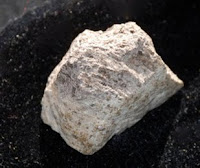Wikipedia tells me Super Bowl Sunday is the second-largest day for U.S. food consumption, after Thanksgiving Day. Bet that got your attention foodies (George Clooney helped too)!
Football is one of the world's most ancient games, but American Football only dates to the 1890s, popularized in high schools and colleges as well as on the professional field.
The sport took center stage in 1967 when the Super Bowl was born. On January 12, 1969 when the Baltimore Colts were beaten by the New York Jets of the fledgling American Football League the audience exploded. The next year, the leagues merged, and over the next 40 years the Super Bowl has become America's most watched sporting event –– it's become a gathering of friends and family nearly as essential as Thanksgiving dinner or the 4th of July barbecue.
"Following Apple Computer's 1984 commercial introducing the Macintosh computer, directed by Ridley Scott, the broadcast of the Super Bowl became the premier showcase for high concept or simply extravagantly expensive commercials.
Famous commercial campaigns include the Budweiser "Bud Bowl" campaign, and the 1999 and 2000 dot-com ads. Prices have increased each year, with advertisers paying as much as $3 million for a 30-second spot during Super Bowl XLIII in 2009. A segment of the audience tunes in to the Super Bowl solely to watch the creative commercials.
Super Bowl XLIII in 2009 holds the record for total U.S. viewership, attracting an audience of 98.7 million and ranking second only to the final episode of M*A*S*H* for total audience."**
I used to host a Super Bowl party for couples. I lived in a loft that was long and narrow at that time. The men were at one end with their favorite foods and beer, and the girls were at the other watching a chick flick and eating a lot of chocolate and fancy finger foods with wine and champagne. Everyone brought favorite dishes and shared.
I give you one of mine… for the boys in the front room. Go football!
1 lb. ground beef
1 t. salt
1/2 t. sage
1/2 t. thyme
1/2 t. garlic powder
1/2 t. pepper
1/4 c chopped onion
1/2 c flour
1/4 c oil
Season beef with spices and salt and add chopped onion. Roll into balls. Roll in flour and fry in oil till just brown.
1 egg
1 Tb water
1 c panko crumbs
1/2 c finely chopped pecans
1/2 t salt
oil for deep frying
Roll the already fried balls in blended egg and water then roll in combined panko and pecans and fry until golden and crispy. Drain on paper towels. Serve hot or room temp for an appetizer with the dip.
Devil’s Own Dip:
1/4 c soy sauce
1 clove garlic, minced
2 T. Brown sugar
2 T. Rice vinegar
1/4 t. 5 spice powder
1 egg
1 T Dry mustard (more if you want it hotter!)
3/4 c oil (Safflower or canola)
3 T toasted sesame oil
Boil first 4 ingredients gently till reduced to 1/4 cup, then add 5 spice. Cool. Add egg to processor, then mustard and process for 30 seconds. Add oil gradually to make a mayonnaise. Add the reduced sauce and salt and pepper to taste.
This sauce is also good for cold roast beef, chicken fingers even shrimp! It’s a great sauce –– I often make double to have a little extra! I’ve had this recipe for years and years so I’m sorry I can’t give credit where credit is due –– and it is due!








.jpg)









































